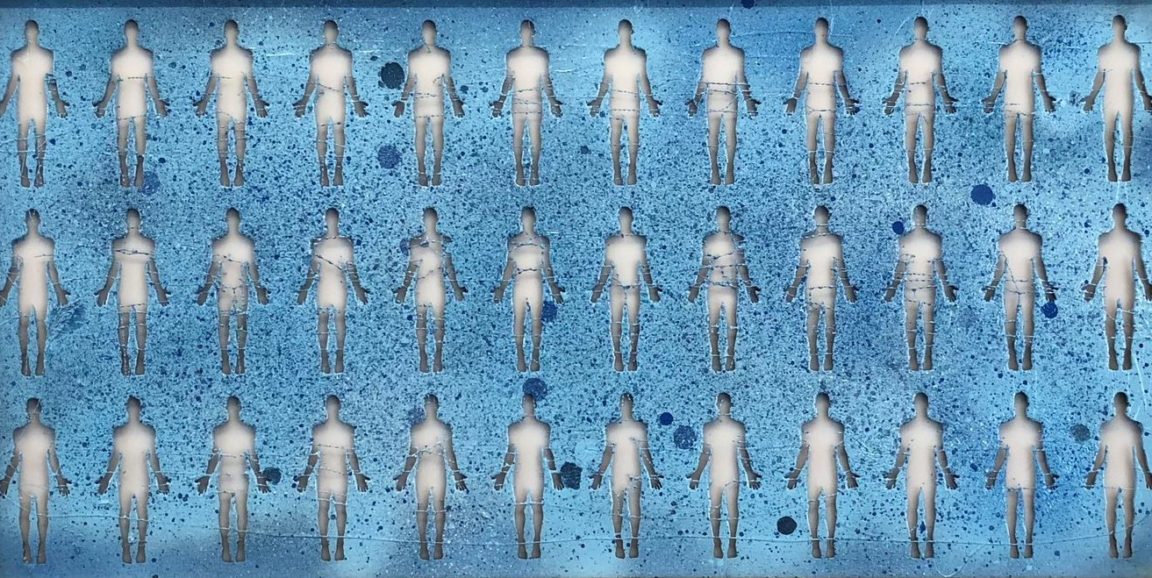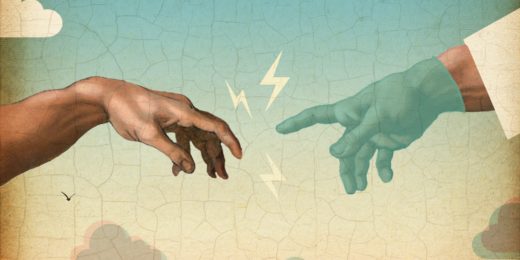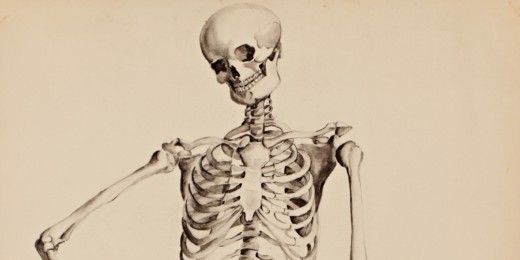With Halloween right around the corner, it seems only fitting to spend a minute on monsters. Frankenstein, to be exact.
The Stanford Medicine in the Muse Program has been celebrating the publication bicentennial of Mary Shelley’s pivotal novel of Gothic horror in a year-long initiative exploring artistic, scientific and ethical questions ignited by the book.
One resulting homage is a 32-work visual art installation called Reflecting Frankenstein displayed throughout the Li Ka Shing Center for Learning and Knowledge on campus. Thus far, sales of component pieces have raised more than $5,000 for charity.
If you're local, perhaps you’ve glimpsed the cornerstone mosaics: two unmissable 8-foot-tall human figures dominating a prominent wall on the first floor. Or maybe you’ve pondered the smaller silhouettes, scattered throughout the building in a pattern of varied color and wood veneer.
The artist, medical student Nick Love, PhD, discusses their meaning and their matter in a new essay written with Audrey Shafer, MD, director of the Medicine in the Muse program, and published in JAMA.
They write that the networks of lines threaded through the figures represent three “conceptual systems of skin ‘lines’ defined in the century after Shelley’s novel’s publication” and reflect Frankenstein’s themes of route navigation and mapping.
The use of mirrors, they say, “plays with the idea of surfaces and what lies beneath while including the viewer in the work in an unavoidable collusion.”
And those nine works with rows of cookie-cutter shapes? They’re meant to “convey that what seems contained and restrained, may, in fact, lead to an outnumbering of the created to the creator.”
Ultimately, Love and Shafer write:
The art, like the novel, tells a cautionary tale: are we able to understand unintended consequences of our explorations, and if so, can we address those adverse consequences in timely, just, and ethical ways?
Photo of Nick Love's artwork by Kris Newby






